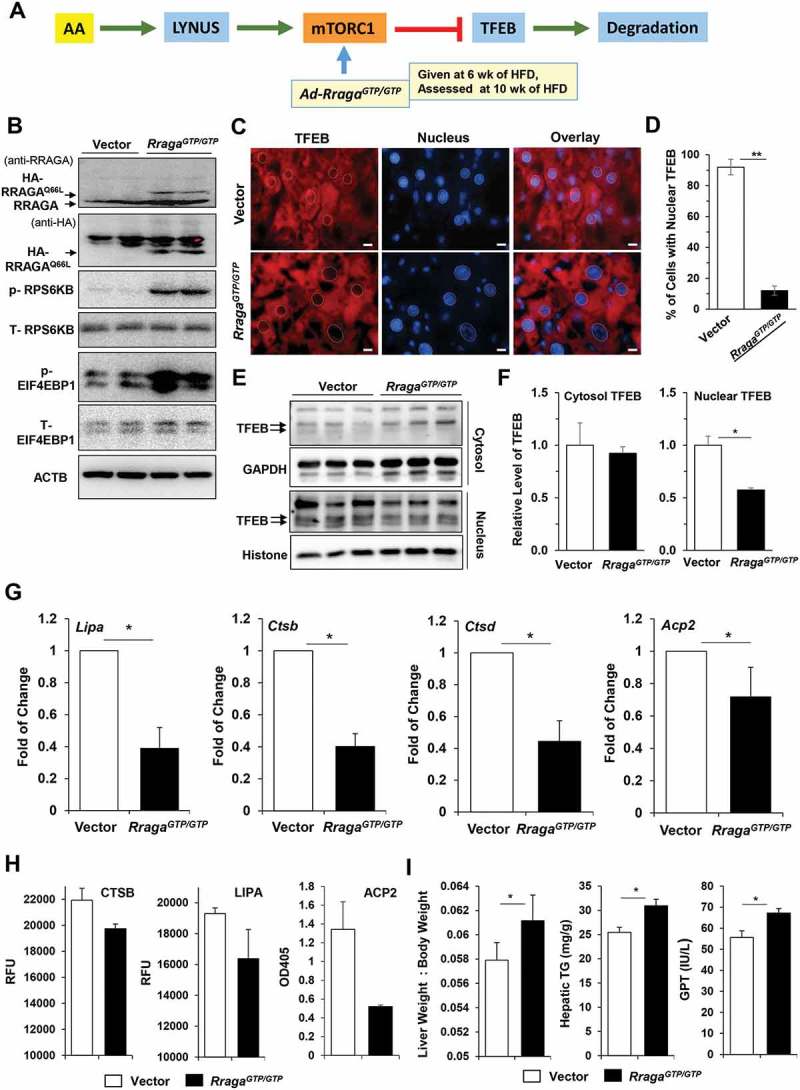Figure 8.

Overexpression of a constitutively activated RRAGA mutant disrupted the MTORC1 oscillation pattern and impaired liver function. (a) Scheme of experimentation. Mice fed with HFD for 6 weeks were given Ad-RragaGTP/GTP, or adenoviral vector, followed by 4 more weeks of HFD feeding before being sacrificed. (b) Liver lysates were analyzed by immunoblotting for RRAGA expression and MTORC1 activation. (c-d) Cryosections of the livers were stained with anti-TFEB and Hoechst 33328. The nuclei are indicated with dotted circles (c) and the percentage of cells with nuclear TFEB were quantified (d). (e-f) Liver lysates were fractionated to the cytosol and the nucleus for immunoblotting analysis (e). The levels of TFEB in Ad-RragaGTP/GTP groups relative to the vector groups were determined by densitometry in both fractions (f). (g) The mRNA levels of the selected TFEB targets were determined by qRT-PCR. (h) Hepatic lysosomal enzyme activities were determined. (i) The following parameters were determined: liver:body weight ratio, hepatic triglycerides, and serum GPT. *, p < 0.05; **, p < 0.01; n = 3 per group, Scale bar: 10 μm. Acp2, acid phosphatase 2, lysosomal; Ctsb, cathepsin B; Ctsd, cathepsin D; Lipa, lysosomal acidic lipase A.
